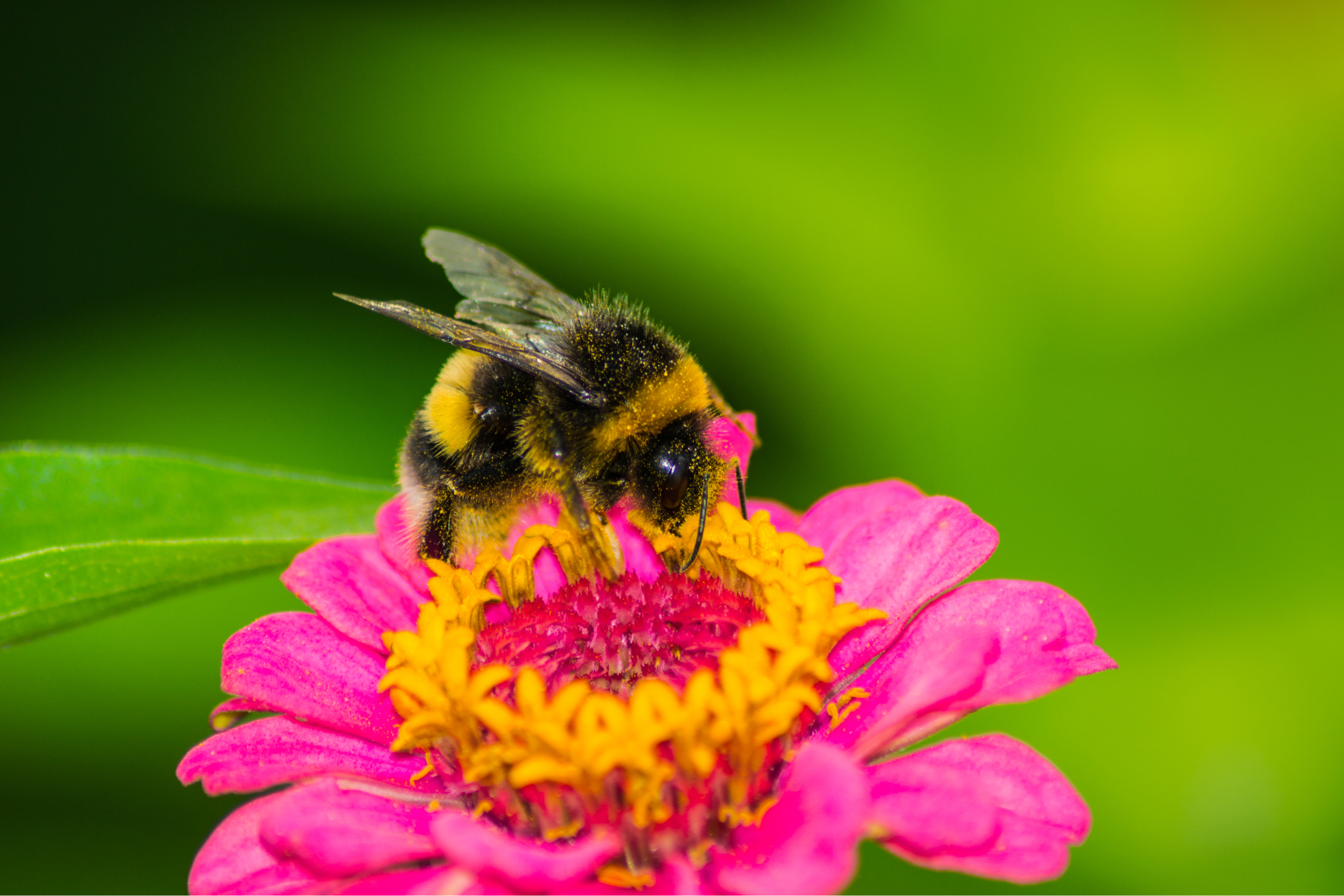
Not Just Honey Bees: How Native Bees Keep Our Crops Thriving
When people think about pollinators, honey bees often steal the spotlight. But there’s another powerful group quietly at work in our fields, orchards, and gardens—native bees. These unsung heroes are just as essential, if not more so, when it comes to supporting healthy crops and vibrant ecosystems.
With over 4,000 species in North America alone, native bees are incredibly diverse, highly efficient, and deeply important to the way we grow food.
What Are Native Bees?
Native bees are species that evolved in North America long before honey bees were introduced by European settlers. Unlike honey bees, which live in large colonies and are managed by beekeepers, most native bees are solitary. They nest in the ground, in hollow stems, or in old wood. And they come in a stunning variety of sizes, colors, and behaviors.
Some of the most common native bees include:
-
Bumble bees (Bombus spp.)
-
Mason bees (Osmia spp.)
-
Leafcutter bees (Megachile spp.)
-
Sweat bees (Halictidae family)
-
Carpenter bees (Xylocopa spp.)
Each type has unique strengths, and many are specialists that pollinate specific types of plants exceptionally well.
Why Native Bees Are Crucial to Agriculture
Native bees are powerful and often more efficient pollinators than honey bees for many crops. In fact, some native bees are better suited for certain tasks than honey bees ever could be.
Here’s why:
1. Buzz Pollination
Bumble bees and a few others use a technique called buzz pollination—vibrating their bodies to shake loose pollen from flowers. This method is essential for crops like:
-
Tomatoes
-
Peppers
-
Blueberries
Honey bees can’t do this, making native bees irreplaceable for these plants.
2. Early and Late Season Activity
Some native bees are active earlier in the spring or later into fall, making them key pollinators when honey bees are less active.
3. Better for Small Farms and Wild Spaces
Native bees often stay closer to where they nest, making them ideal for pollinating crops in gardens, small farms, orchards, and native plant landscapes.
4. Crop-Specific Experts
Many native bees are plant specialists, meaning they’ve evolved alongside specific plants and are perfectly adapted to pollinate them. This helps increase yield and quality in crops that depend on targeted pollination.
Crops That Benefit From Native Bees
A wide range of U.S. crops depend heavily on native bee pollination, including:
-
Apples
-
Blueberries
-
Cherries
-
Squash and pumpkins
-
Cranberries
-
Tomatoes
-
Peppers
-
Watermelons
-
Almonds (in combination with honey bees)
Studies show that native bees can boost crop pollination even in the presence of honey bees, and in some cases, native bees alone can provide sufficient pollination.
The Threats They Face
Despite their importance, native bee populations are in trouble.
Major threats include:
-
Habitat loss due to urbanization and monoculture farming
-
Pesticide use, especially systemic insecticides
-
Climate change, which disrupts flower bloom times
-
Competition from managed honey bees, which can crowd out native species
Unlike honey bees, which can be raised and transported, most native bees rely on nearby natural habitats to survive.
How to Support Native Bees
The good news is that small changes can make a big difference for native bees—and healthy crops.
Here’s how you can help:
-
Plant native wildflowers and flowering herbs that bloom throughout the season.
-
Avoid pesticides, especially neonicotinoids.
-
Leave patches of bare ground, which many solitary bees need for nesting.
-
Provide bee hotels or nesting blocks for mason and leafcutter bees.
-
Support diversified farming and pollinator-friendly practices.
Whether you’re a backyard gardener, a farmer, or just someone who enjoys fresh produce, helping native bees helps you too.
In Conclusion
Native bees are essential to the success of American agriculture. They’re tough, diverse, and incredibly efficient—yet often overlooked. By protecting their habitat and welcoming them into our growing spaces, we help ensure stronger harvests, richer biodiversity, and a more resilient food system.
Next time you see a tiny, buzzing bee that’s not a honey bee, give it a moment of appreciation. It just might be one of nature’s most valuable farmhands.
Up next: Butterflies in the Fields: How These Colorful Pollinators Help Keep Crops Thriving
Share


